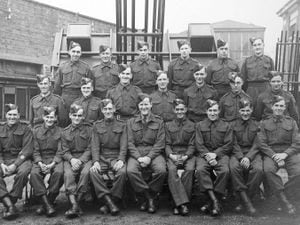West Midlands County Council: The birth and death of a county people never took to heart
With hindsight, it was probably a mistake to launch a controversial shake-up which wiped out centuries of history on April Fool's Day.
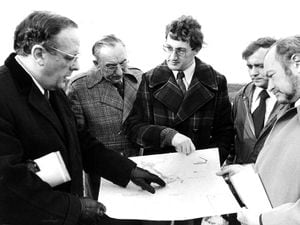
And probably an even bigger one to replace it with something else, also on April 1.
It is 35 years since the former West Midlands County Council was abolished, and the whole experience still leaves a bitter taste in the mouth for Black Country historian and author Tom Larkin.
"It was a total disaster, and very costly to taxpayers and ratepayers," he says.
"It replaced a system of local government which had served the people well for years, just because that is what people in London wanted."
West Midlands County Council, or 'the metro' as it became known, only lasted for 12 years, and people never really took it to their hearts, the April Fool's Day launch marking just the beginning of a series of public relations blunders which would dog the authority throughout its brief life.
Prior to the shake-up, Walsall, West Bromwich and Wolverhampton had, for centuries, been part of Staffordshire, while Dudley had – until it joined Staffordshire in 1966 – been part of Worcestershire. And when these ancient counties were carved up to bring their largest towns and cities together in one new 'super county', there were many who were not happy.
The idea of a West Midlands regional authority was first mooted by Lord Redcliffe-Maud in the 1960s, after he was asked to lead the Royal Commission on Local Government in England. At this time there were concerns the old county structure no longer reflected population changes which had taken place in large towns and cities on the back of the Industrial Revolution.
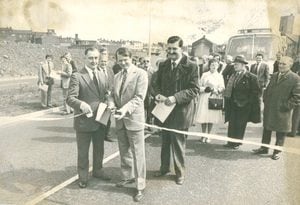
His original proposals, published in 1969, were actually more wide reaching than what materialised. He called for what is now South Staffordshire, Cannock Chase, and Wyre Forest to also come under the new authority, along with Lichfield, Rugeley and Tamworth. But by the time the legislation was finally passed in 1972, the Heath government decided to leave these areas out of the new county.
For cricket fans, it was particularly unpalatable. Edgbaston, home to Warwickshire County Cricket Club since 1882, was now outside the county. Dudley's cricket ground, which continued hosting Worcestershire's Sunday League games until 1977, was also left out on a limb.
To add insult to injury, the remainder of Worcestershire was merged with Herefordshire to create the equally unloved new county of Hereford & Worcester.
Of course, it wasn't just this region that was affected. The legislation saw the birth of Avon, Humberside, Merseyside and Tyne & Wear, which were met with similar disdain in their respective areas.
Mr Larkin, who had served as a councillor in Bilston for many years, says the discontent was as much about the loss of identity as anything else. With no historic background, the West Midland county just did not resonate with the general public.
"People weren't happy with it, they didn't want to lose their identity, and they rejoiced when it was abolished," says Mr Larkin, now 93.
"It was completely divorced from what local people wanted. It was the result of this idea that came out from the 1950s and 60s that bigger would always be better and more efficient, but was proved to be wrong. It didn't work."

One of the initial concerns was that the new authority would centre heavily on Birmingham, and that neighbouring towns would be treated as satellites of the great metropolis. These fears grew when it was announced that the new County Hall would be located in Lancaster Circus, Birmingham – despite earlier suggestions that it could be based at the former Wigmore Boys' School in West Bromwich.
One of the more vocal critics was Coventry MP John Butcher, who in a withering speech to parliament in 1982, called for the county to be abolished.
"The West Midlands metropolitan county council is as useful to local government as the appendix is to the digestive system," he said. "Its presence is unnecessary and it becomes noticeable only when it malfunctions."
Mr Butcher said the council's spending had increased from £86 million in 1974–75 to £305 million in 1981–82, by which time it employed nearly 6,000 staff. In fairness, it should be pointed out that was to the backdrop of a period of high inflation.
The 1985 Local Government Act paved the way for its abolition, with most of its powers going to the seven metropolitan borough councils which served the main towns which made up the new county.
But the West Midlands County Council was not going to disappear without a fight. In its dying months, the authority took out advertising space on billboards across the region, protesting against the abolition.
And in a final gesture of defiance, the council went on one last spending spree, dishing out its entire £3 million reserves to community projects the week before it was wound up.
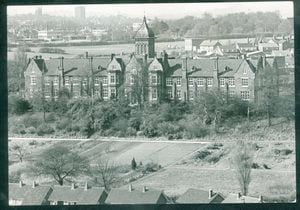
Walsall Council mounted a legal challenge, arguing that the money should go to the borough councils which were taking over the county's responsibilities, but a judge ruled in the county's favour, and the cash bonanza was on.
There was a last-gasp stampede as different organisations clamoured for a share of the great giveaway. And for those that succeeded, the pickings were very rich indeed. Pensnett Tenants Association in Dudley received more than £100,000, while £150,000 donations were made to Birmingham's Chinese Community Centre and Bethel Community Association in Sandwell. The Wolverhampton Marathon got £26,100, while Birmingham Lesbian and Gay Centre received £27,577 to buy the freehold of its building in the city.
In another act of largesse, it bequeathed £1.5 million to Birmingham in support of its bid for the 1992 Olympics.
There was another side to the story, of course, and there were some who were genuinely saddened by the council's passing. Former chairman Gladys Pemberton said the authority had scarcely been given time to discover its full potential, and said several developments would never have happened without the county.
Outgoing council leader Gordon Morgan said: "I think the West Midlands will be the poorer for the abolition of the county council, whether the ratepayers really realise it or not."
Paul Tilsley, leader of the Liberal Democrat group on the authority, admitted the council 'had slipped on its own banana skins in the past', but said most of what the county had achieved was for the benefit of the West Midlands.
"I do not think any government can turn its back on the need for regional seats of power," he added.
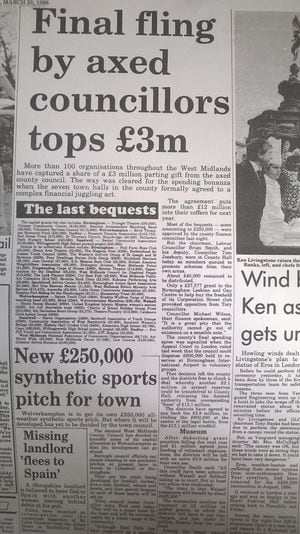
The Express & Star did not mourn its demise, though, describing the creation of metropolitan county councils as "the most costly local government experiment in history".
In a scathing leader column, this newspaper wrote: "Bureaucratic duplication was inevitable, and indeed planned, but what rankled most with ratepayers was the way money was being thrown around for political rather than social purposes."
The authority's often difficult relationship with the local media hit rock bottom on its final working day, when reporter David Bell was banned from the council's buildings after his newspaper published pictures from a £5,000 banquet at Birmingham's Grand Hotel to mark the end of the authority.
It would be wrong to say the West Midlands County Council held a monopoly on such excess. Indeed, a report published the following year suggested council spending had actually increased since the authority was abolished. There were many who felt that the West Midlands authority was being unfairly tarred with the same brush as Ken Livingstone's Greater London Council, which had become a constant source of irritation to Margaret Thatcher in the 1980s.
But bringing together seven large and fiercely independent areas was always going to be a tall order, particularly given the fears that Birmingham would dominate. And maybe its biggest problem was the resentment that a new, artificial identity was being forced on people by bureaucrats in London
The West Midlands finally disappeared as a postal address in 1996, although the county technically still exists for ceremonial purposes.
Despite assurances to the contrary, there are many who wonder whether the West Midlands Combined Authority, launched in 2016, will eventually morph into a new version of the county council.
Tom Larkin is one of them, and warns that any attempt to recreate such an authority will have severe consequences for the Black Country.
"Since the late 60s, concerns have been expressed about the decline of the entire area, which raises justified fears that Birmingham, because of its size, will almost certainly dominate any future regional administration,” he says.
“Without a doubt, the majority of politicians favour such a proposal, and it could prove to be the final obituary of the once unique Black Country.”


